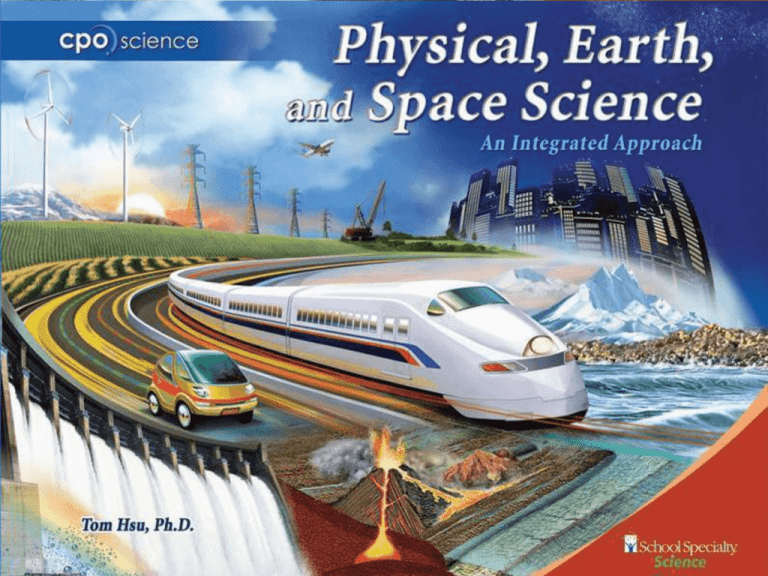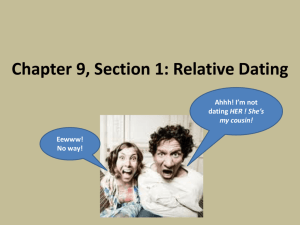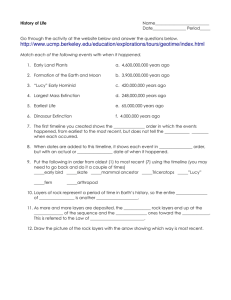Section 18.2 - CPO Science
advertisement

UNIT SIX: Earth’s Structure Chapter 18 Earth’s History and Rocks Chapter 19 Changing Earth Chapter 20 Earthquakes and Volcanoes Chapter Eighteen: Earth’s History and Rocks 18.1 Geologic Time 18.2 Relative Dating 18.3 The Rock Cycle 18.2 Learning Goals Compare and contrast methods of relative dating. Discover the contributions of scientists whose theories help to develop modern geology. Explain the importance of fossils. Investigation 18B Relative Dating Key Question: How does relative dating tell a story? 18.2 The beginnings of geology In 1666, Nicholas Steno, a Danish anatomist, studied a shark’s head and noticed that the shark’s teeth resembled mysterious stones called “tonguestones”. 18.2 The beginnings of geology Steno theorized that tonguestones looked like shark’s teeth because they actually were shark’s teeth that had been buried and became fossils. 18.2 Relative dating Steno’s principles are used by geologists to determine the age of fossils and rocks in a process called relative dating. Which event happened first? Relative dating is a method of sequencing events in the order they happened. 18.2 Relative dating James Hutton (1726–1797) showed how processes today might explain what happened a long time ago. For example, grooves left behind by flowing rainwater helped explain the formation of the Grand Canyon from the Colorado River. 18.2 Law of superposition Steno’s ideas for relative dating include superposition, original horizontality, and lateral continuity. Steno identified the law of superposition, which states that the bottom layer of a rock formation is older than the layer on top. 18.2 Law of horizontality Steno also identified the law of original horizontality which refers to how sediment particles settle to the bottom of a body of water in response to gravity. Horizontal layers of rock might become tilted or folded by a geological event. 18.2 Original horizontality Layers might be tilted at any angle and can even be upside down. 18.2 Law of lateral continuity The law of lateral continuity refers to how layers of sediment extend in all directions horizontally unless a river erodes them or an earthquake moves them. 18.2 The relative age of a rock The principle of crosscutting relationships states that a vein of rock or a fault that cuts across a rock’s layers is younger (more recent) than the layers. The middle and top layers formed after the bottom layer but before the vein. 18.2 Fossil succession The principle of fossil succession means that fossils can be used to identify the relative age of the layers of a rock formation. The organisms found in the top layers appeared after the organisms found in the layers below them. 18.2 Fossils and Earth’s changing surface Most of the land on Earth was part of a large landmass called Pangaea about 250 millions of years ago. 18.2 Fossils and Earth’s changing surface Fossils provide evidence for how Earth’s surface has changed over time. Scientists map fossil locations. Understanding Earth’s past helps explain how similar plants and animals ended up in different locations.








